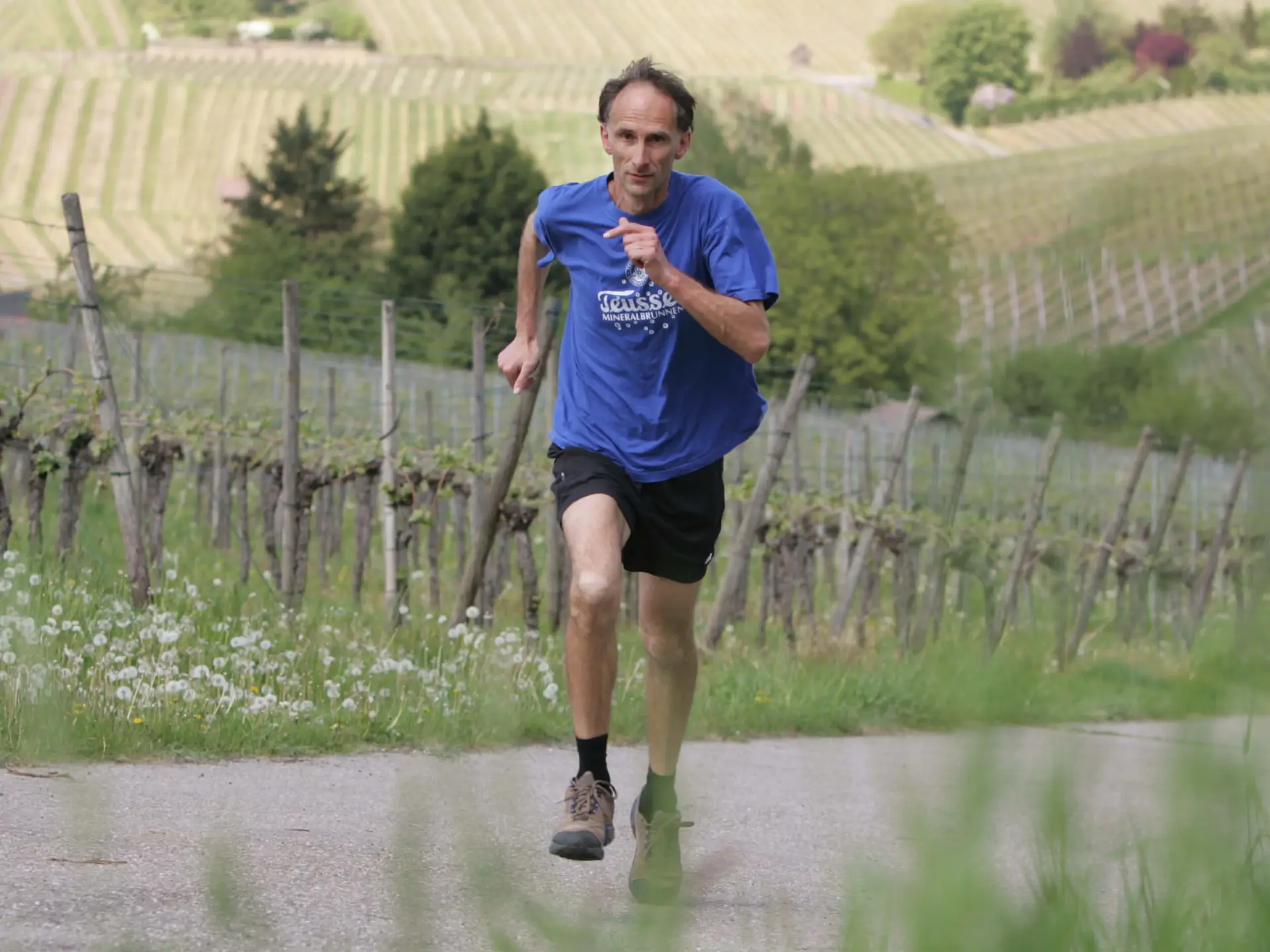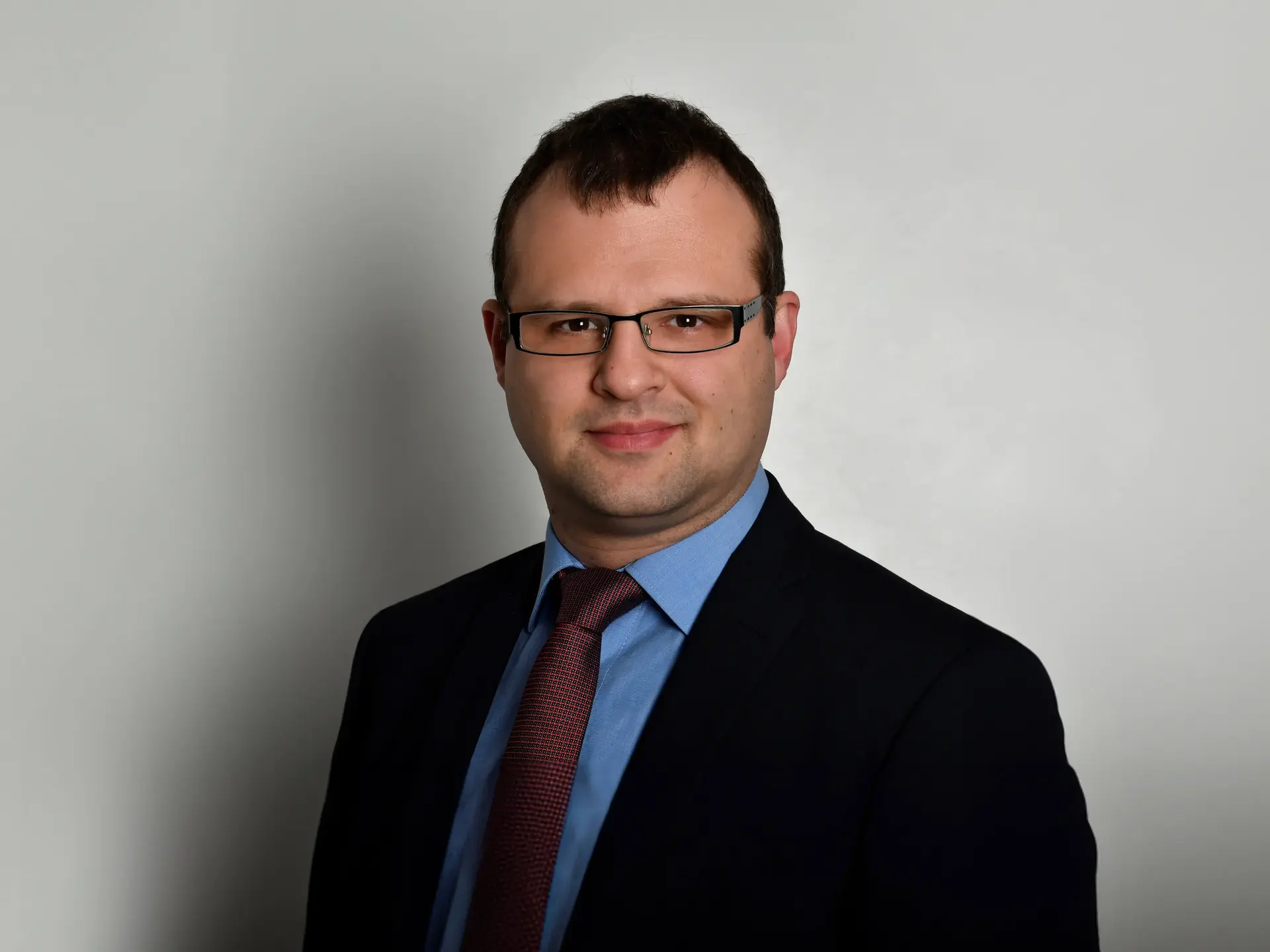
A Good Run for New Health Data
Dr. Tobias Köppl is a mathematician at the service of health. He uses scientific computing methods to support the development of new medical and biotechnological processes in individualized medicine. His numeric models of the cardiovascular system, for example, help improve movement therapy. For this project, Dr. Köppl works with ultramarathon runner Jürgen Mennel from Neckarsulm and others.
So far, Jürgen Mennel has run 480,000 kilometers in his lifetime. “My overarching goal is to reach 500,000,” he says with a smile. Jürgen Mennel started training at the age of eight and in 1988 he became vice world champion over 100 kilometers. As a sports therapist, Jürgen Mennel knows from experience that “moving is curative.”
He carried this message with him when he ran the 2,200 kilometers from Heilbronn to Athens on the 2500th anniversary of the Athens Marathon in 2010. At about the same time, scientists published new research findings about the positive effects of sports on our health. This was to become the starting point for the development of the Digitale Laufbandplattform (Digital Treadmill Platform) on which Jürgen Mennel is working in cooperation with TUM, Fraunhofer IAO in Stuttgart, Fraunhofer Kodis in Heilbronn and other research institutions and universities.
“We wanted to find out how we can use data collected from people on the treadmill to draw a virtual map of what exactly goes on in the body,” Jürgen Mennel explains. The data ranges from image material for visualizing blood vessels and bones to pulse and blood pressure curve measurements. “What is even more important: How do we benefit from this insight, for example, to improve movement therapies?”

Jürgen Mennel, initiator of the Digital Treadmill Platform.
However, simulating body processes is anything but easy. The virtual visualization of the blood system and blood flow results in huge amounts of data. In addition, the simulations require complex calculations. This is the area of expertise of Dr. Tobias Köppl who taught at TUM Campus Heilbronn until April 2023. He says: “Simulating blood flow in major vessels has been a crucial part of my research for many years. This is why Mr. Mennel contacted me and asked me for support with his project.”
The precursor of the digital twin
To be relevant, a blood flow simulation must be based on a number of parameters including the length of the vessels and the thickness and elasticity of the vessel walls. Because some of them, e.g. elasticity, are very difficult to gauge, these parameters are estimated using complex procedures applied in data science. To determine the length or diameter of a vessel, elaborate processes must be used to reconstruct it from image data. For the Digital Treadmill Platform, Dr. Köppl worked with simplified flow models to identify the distribution of blood volume throughout the body. “The advantage of this approach is that the time it takes to calculate the result is reduced substantially without significantly compromising the accuracy of the target parameters,” he explains.

Dr. Tobias Köppl translates medical data into digital simulations.
For example, the approach can be applied to determine the effects of a specific therapy on the blood supply to the liver – a crucial parameter, particularly for patients suffering from fatty liver disease which can be the result of excessive weight and a poor diet, as well as diabetes. “One way to prevent fatty liver disease is to improve blood circulation in the organ,” says Dr. Köppl. Movement therapy can help. The better the movement therapy is customized to the individual patient, the better the results. How warm should the water be in which the patient swims? How long and intensive should individual treadmill exercise phases be? Personalized answers to these questions should be provided soon by the Digital Treadmill Platform. In addition to simulating blood flow, it can visualize muscle movement. “It can be considered a precursor of a digital twin of each individual patient,” Dr. Köppl adds.
Benefits for society
Mathematician Dr. Köppl expects that over the next few years computer models will be able to visualize increasingly larger parts of the human organism – from the grid of blood vessels to a numeric model of the heart. Machine learning techniques help scientists process and harness large amounts of data. Quantum computers could accelerate these processes in the future.
Whether looking at preventive medicine or acute medical care, these developments can benefit all patients. “Analyzing patients’ medical data with methods used in data science, e.g. neural networks, facilitates the automated detection of individual or combined risk factors impacting health including excessive weight, hyperglycemia, and hypertension,” says Dr. Köppl. “Depending on the amount of data available, an initial diagnosis may be reached more quickly by a digital twin than the human brain.” He adds that reducing the time for diagnosis and treatment could ease the burden on the healthcare sector substantially.
Dr. Köppl also points out that, “the storing of data concerning a person’s health must be protected by stringent privacy regulations.” For example, if insurance companies could access this type of data, they could assign patients to specific risk groups and increase their premiums. According to Dr. Köppl, handling sensitive patient data is the top priority.
